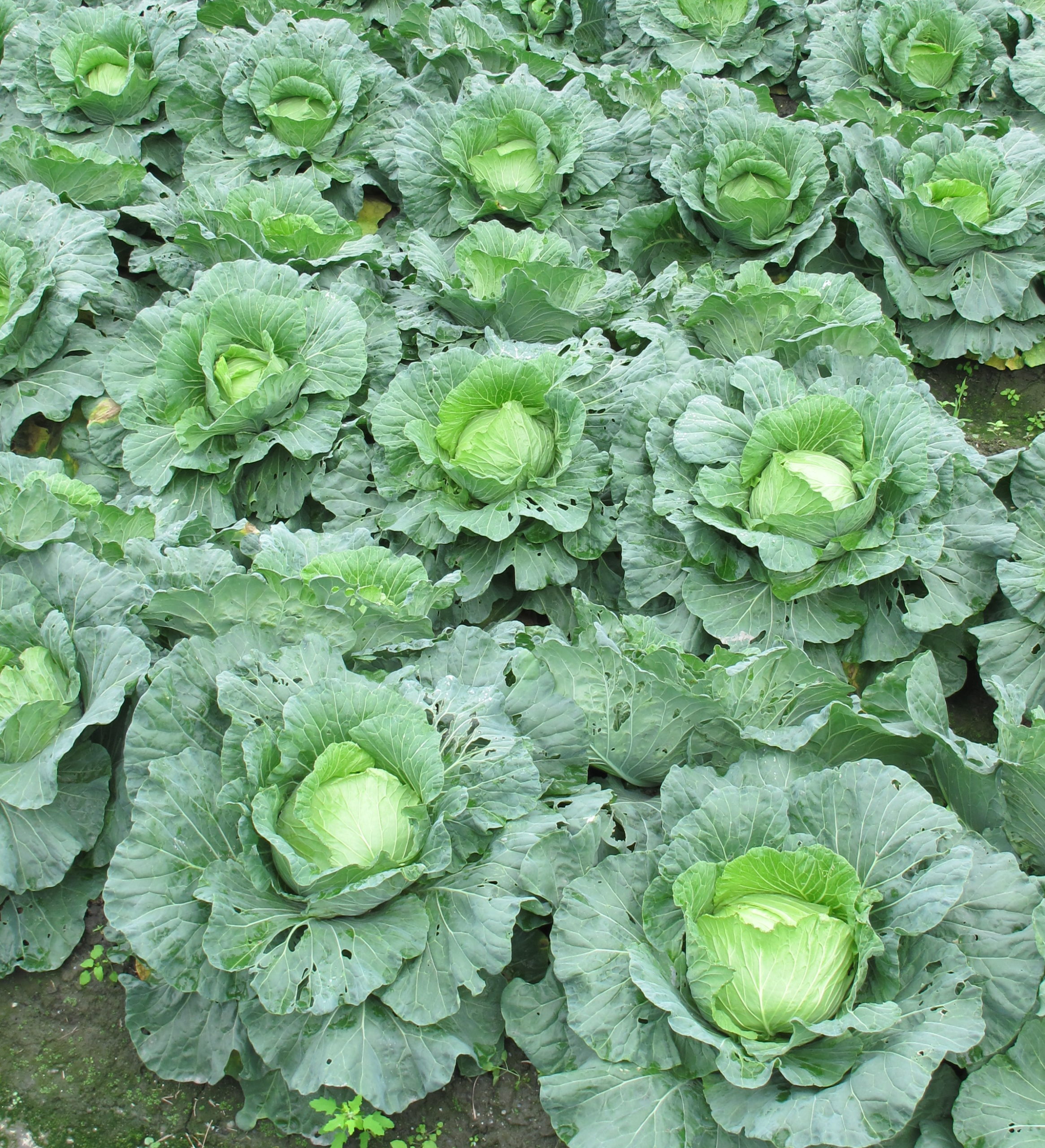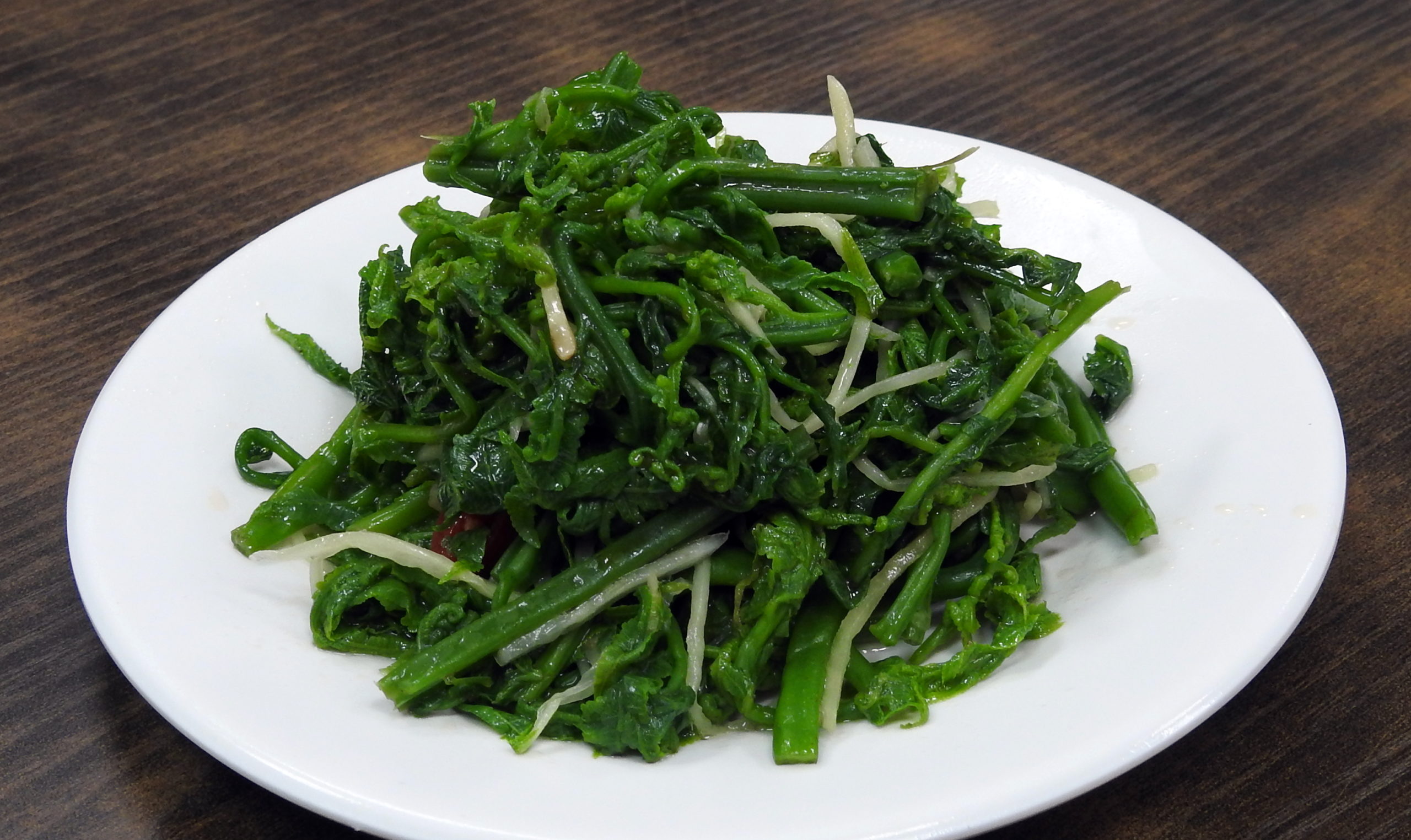
stir fried fern shoots
Official statistics fail to capture the full extent of vegetable cultivation in Taiwan. Beyond the rice paddies and orchards, many farmers also tend to seasonal greens, often sharing their harvest with family rather than selling it. Even city-dwellers get in on the action, cultivating scallions or cilantro in balcony boxes. In Taiwan, few opt for frozen or canned vegetables, preferring instead to visit traditional morning markets, a ubiquitous presence in every neighbourhood.
Cabbages and Bamboo Shoots: Taiwan’s Beloved Greens
By weight, Taiwan’s two most popular domestically-grown vegetables are cabbages and bamboo shoots. These Taiwanese cabbages are distinct from their Western counterparts; they’re sweeter and denser, typically stir-fried with a touch of oil, garlic, soy sauce, and a pinch of salt. Sliced bamboo shoots find their way into pork-rib soup or cold salads.

cabbage patch in taiwan
The Surge of Leafy Greens: A Healthy Trend
Recent years have witnessed a surge in local production of leafy greens like celery, chayote, edible amaranth, lettuce, and spinach, reflecting a growing appetite for healthier eating. Spring ushers in radishes, carrots, and burdock roots, while water spinach, known as “kongxin cai” or “empty heart vegetable” in Chinese, is cultivated from March to December. Chayote, introduced during Japan’s rule from 1895-1945, is abundant between April and October, with its shoots and leaves bearing the poetic name “longxu cai” or “dragon’s whiskers.”
Ferns and Lotus Stems: Unexpected Delights

dragon’s whiskers
Taiwan boasts two delightful vegetables that may surprise you. One, known as “guomao” in Mandarin and often listed as vegetable fern or bracken-fern buds on bilingual menus, is listed in the Taiwan section of the Slow Food Foundation’s Ark of Taste. Boiled buds sometimes feature a raw egg yolk to enhance their texture. Stir-fried bird’s-nest fern, far chewier and crunchier, offers another delightful option.
A-Cai and Taiwan’s Linguistic Tapestry
Known as “A-cai,” this vegetable bears the Roman capital “A” before the Chinese character for vegetable. The name originates from Taiwanese, a distinct language quite close to Hokkien spoken in China’s Fujian province. Another moniker for it is “er-cai” or “goose leaves.” In Taiwan’s pre-urban era, households often kept geese, not just for their meat but also as guardians against snakes. These geese were frequently fed lettuce.
Each Life of Taiwan tour is a tailor-made experience designed to meet travelers’ expectations and cater to their interests. If you’re considering a visit to Taiwan, reach out to us today, and share what you’d like to see, do, and savor on your private tour of Taiwan.
